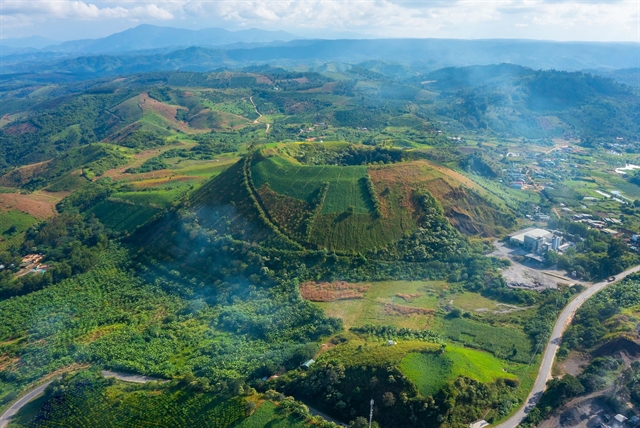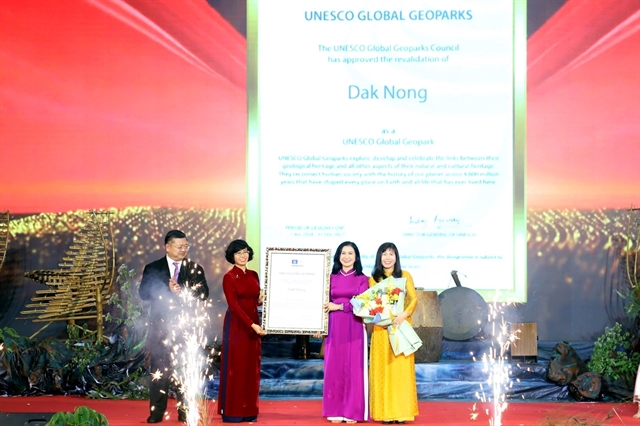The Central Highlands province of Đắk Nông celebrated the second conferment of the UNESCO global geopark title for its geopark at a ceremony organised by the provincial People’s Committee on December 26 evening.

A crater in the Đắk Nông UNESCO Global Geopark. VNA/VNS Photo
HÀ NỘI — The Central Highlands province of Đắk Nông celebrated the second conferment of the UNESCO global geopark title for its geopark at a ceremony organised by the provincial People’s Committee on December 26 evening.
In his address, Chairman of the provincial People’s Committee Hồ Văn Mười said the Đắk Nông UNESCO Global Geopark holds a critical role in the province’s socio-economic development strategy.
He noted that the local authorities prioritise tourism development by promoting the park’s natural advantages, cultural values, and unique ecosystems. The work has been identified as one of the three key pillars of the provincial economy.
In a congratulatory video sent to the event, Guy Martini, General Secretary of the Global Geopark Network and Chairman of the UNESCO Global Geopark Council, lauded Đắk Nông's efforts and affirmed UNESCO’s commitment to supporting the province in leveraging the title’s values, turning the heritage into a significant resource for sustainable development.

A certificate of UNESCO global geopark title is presented to Đắk Nông leaders. VNA/VNS Photo
Earlier, in the afternoon of the same day, a workshop on the geopark and sustainable development goals took place in Đắk Nông, bringing together over 150 delegates, including representatives from the Ministry of Natural Resources and Environment, Ministry of Foreign Affairs, and Vietnam National Commission for UNESCO.
The Đắk Nông geopark has been validated as a member of UNESCO Global Geoparks Network for another four years, from 2024 to 2027. It was first recognised in July 2020, becoming the third to obtain this title in Vietnam, after Đồng Văn Karst Plateau Geopark in Hà Giang Province and the Non Nước Cao Bằng Geopark in Cao Bằng Province.
The park covers more than 4,700 sq.km, stretching through six districts and cities, namely Krông Nô, Cư Jut, Đắk Mil, Đắk Song, Đắk G’Long, and Gia Nghĩa, equivalent to two-fifths of Đắk Nông’s total area. It is home to 65 geological and geomorphologic heritage sites, including a system of nearly 50 caves with a total length of more than 10,000 metres, craters, and waterfalls. With a tropical forest ecosystem, the geopark holds typical biodiversity values. This land also preserves many unique cultural, geological, and natural features as well as traces of prehistoric activities. — VNA/VNS